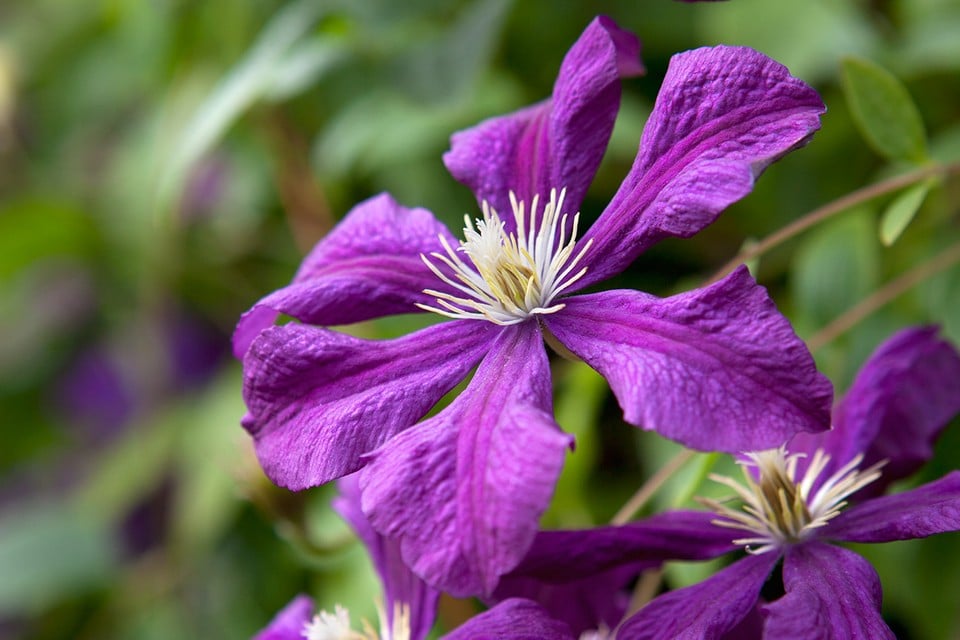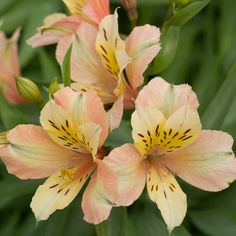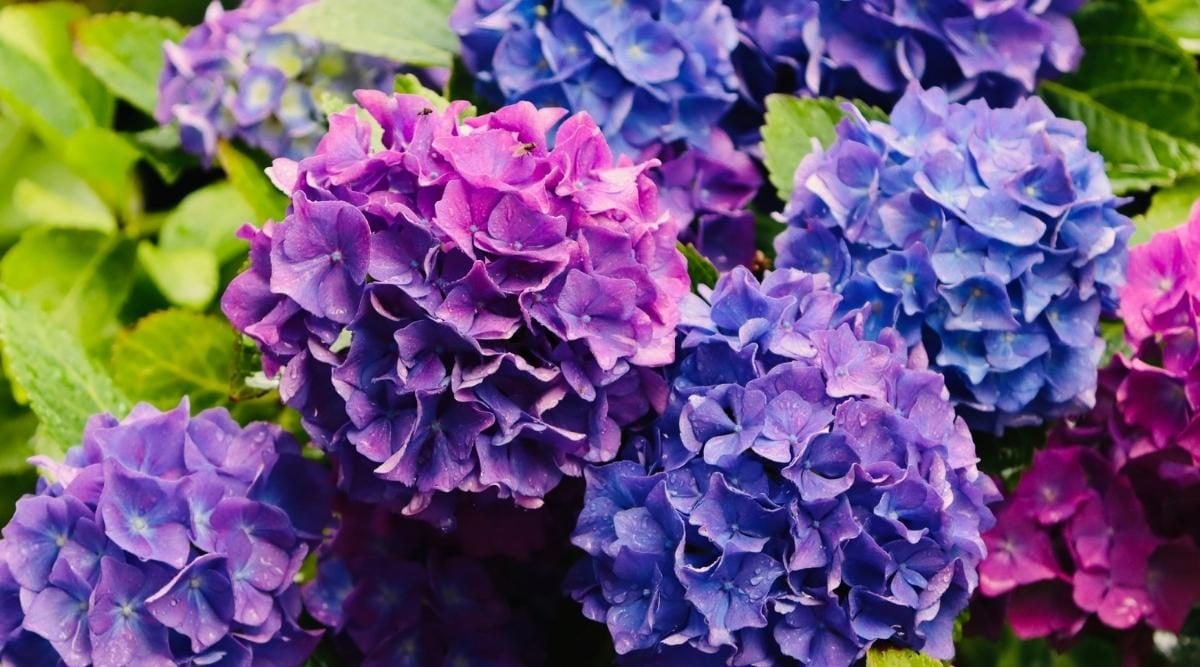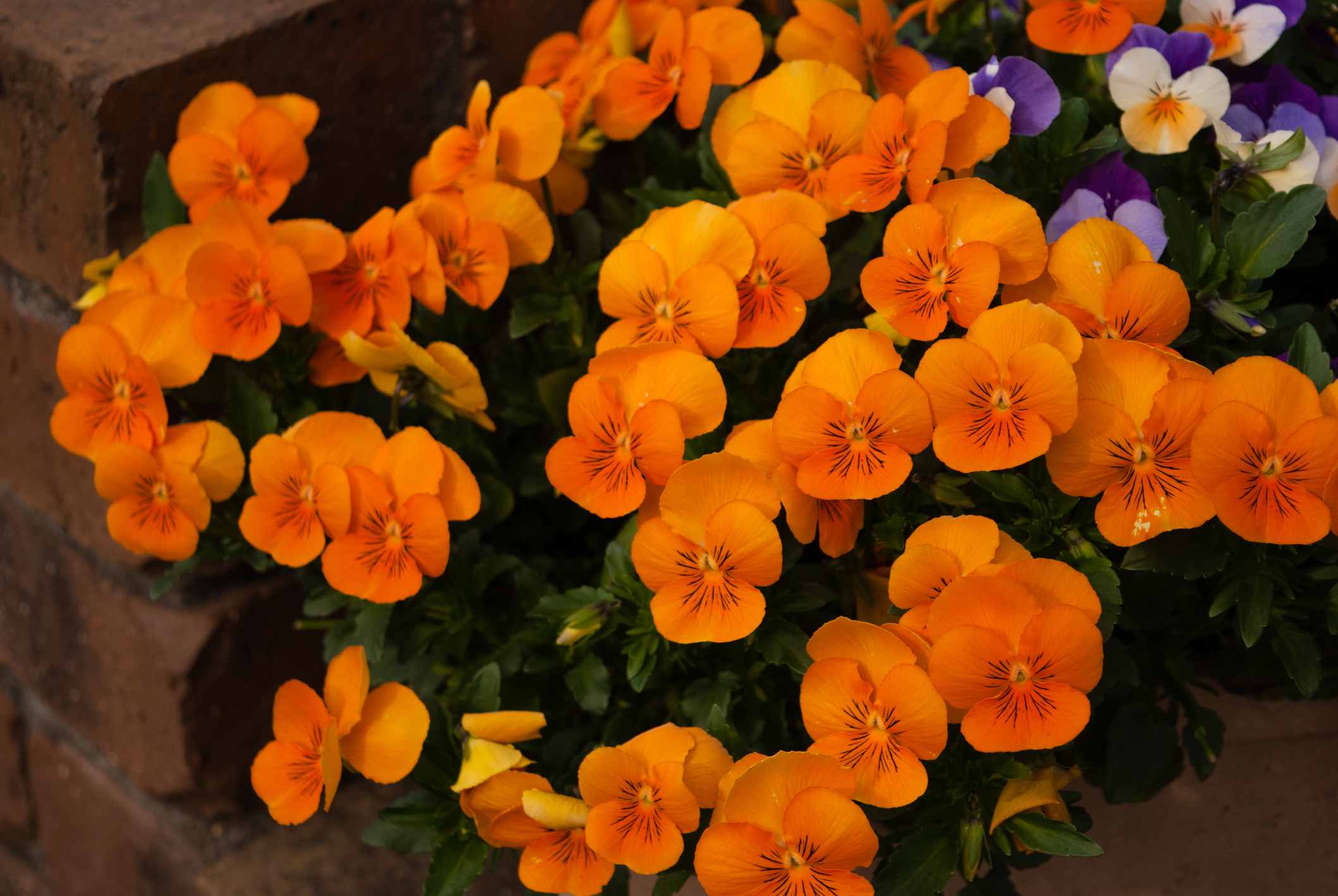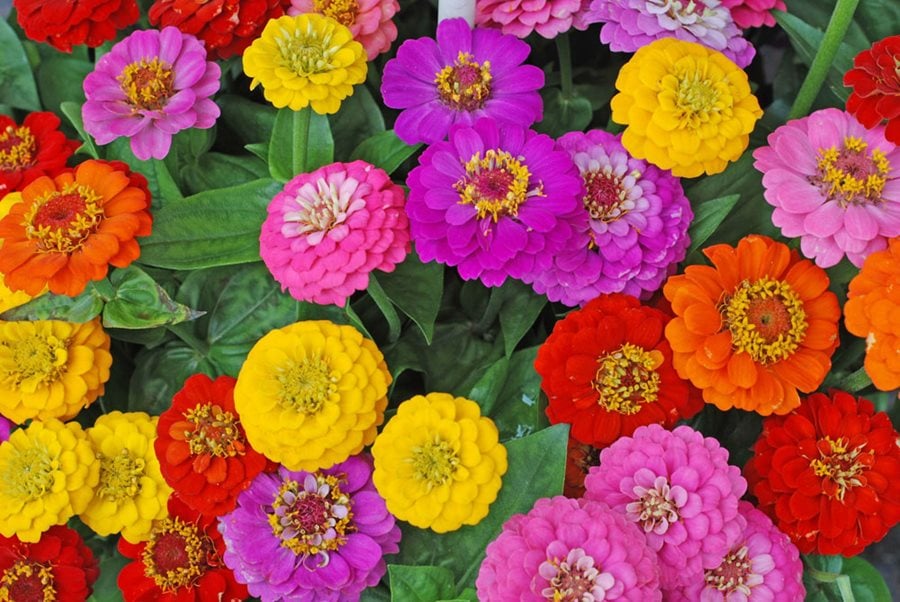Gardeners’ Guide on How to Grow Antirrhinum ‘Snapdragons’
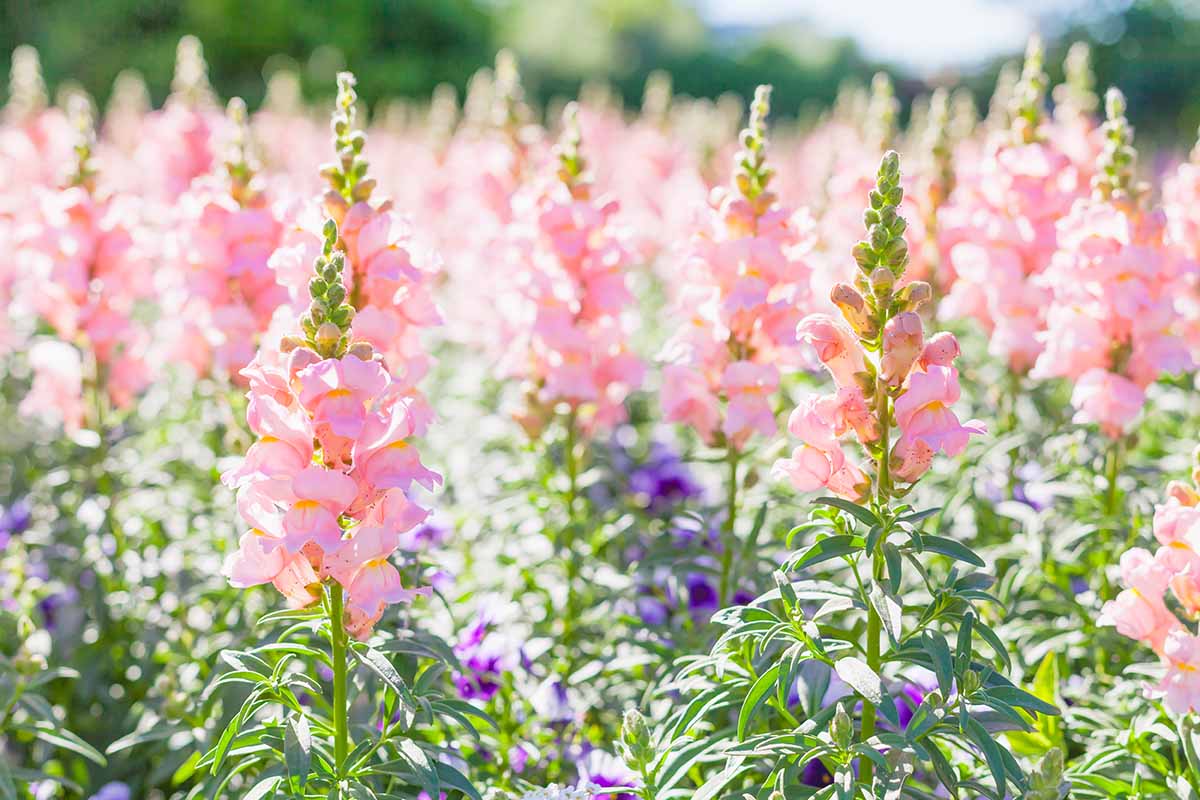
Table of Contents
Antirrhinums, commonly known as snapdragons, are among the most attractive flowers to grow in any garden. The colour variety of these flowers is stunning enough to make them a popular choice for gardeners. These flowers are very easy to grow, short-lived, and perennial. From giving your garden a classic flower touch to decorating your yard’s border, these flowers always come first.
The common name of Antirrhinum comes from its resemblance to a dragon’s snout. This even creates a snapping open and closing motion. This situation occurs when pollinators open their jaws to reach the pollen. Due to their appealing colour, wildlife gets attracted easily. If you want to know how to grow Antirrhinum ‘Snapdragons’, they can be grown in various situations. Its long flowering period, from June until October, is also an added advantage to growing this plant.
In this step-by-step guide, we will let you know the process of growing Antirrhinum from seeds and enhancing the look of your garden.
How the Germination of Snapdragons Occurs from Seeds?
Snapdragons can be sown in the winter if the climate is moderate. Sprinkle the seeds into the garden soil. You can even disseminate them in the garden with a few weeks left until the last expected frost. They are easy to grow but quite slow, so if you plan to grow them from seeds, starting indoors at least six to 12 weeks before the last expected frost is suggested.
Use an ordinary six-mixing pot full of soil and press the seeds under the soil. Place the seed pot under bright light, as the seeds need proper light to germinate. A continuous exposure of 16 hours would be great for their germination.
When the seedlings reach a height of about 3–4 inches, help in branching and compacting by slightly removing the top of the stem. Then, take it outdoors and transplant the plant within a few weeks of the last frost date.
Propagating Snapdragons
They are inexpensive seedlings to purchase from any nursery or e-commerce store. You can also easily propagate them with cut pieces of stem.
Cut off only a 2-inch section of the stem just below the leaf nod for a healthy plant. Then place the stem deeply in the soil after removing the lower leaves. Cover the pot with a plastic bag to maintain the humidity if you use a seed starter mix container or potting soil. Once the roots develop, remove the plastic cover and let them grow naturally using sunlight or artificial light. After the last frost, transplant it into your garden.
How to Make the Snapdragon Plant Bloom?

The reason behind Snapdragon’s extreme popularity is its colourful blooms. You can start seeing blooms in early spring, which continue throughout the season. Though they act like annuals, they are short-lived perennials. Snapdragons usually flower in one particular season.
The secret to having great flowering with snapdragon seed plants is getting the right amount of sunlight. From full to partial sun exposure, you have to adjust the light from time to time. Removing the dying leaves and infertile flower heads can also encourage a great bloom.
How to Care for Snapdragon Plant?
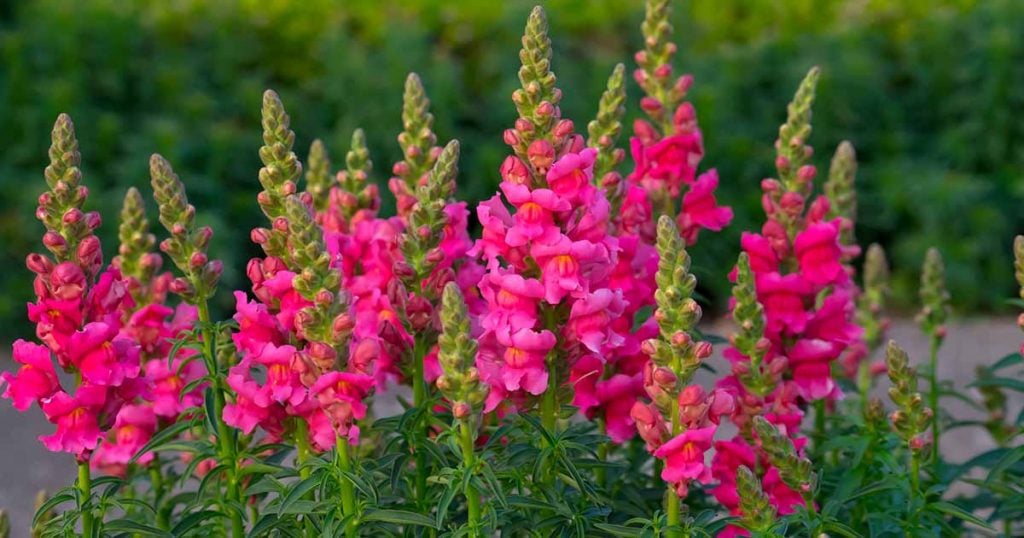
As Snapdragons are considered slow-growing plants, they can be planted directly from seeds purchased from nurseries. The seeds and seedlings are also widely sold in economical packs online. Growing them indoors before the last winter frost is also a fair process. How to grow Antirrhinum ‘Snapdragons’ would be justified when you kept the facts in mind before growing them.
1. Best Time to Grow Antirrhinum ‘Snapdragons’
Late spring to early summer is the best time when Snapdragons are in their best form. If the temperature gets close to 80°F, the plant starts losing its growth power. Snapdragon is available in three sizes for gardeners to choose from:
- Dwarf
- Intermediate
- Tall
The height goes from 8 to 12 inches in dwarf varieties. Intermediates range from 13 to 24 inches; for tall ones, it varies from 25 to 36 inches. A mature plant has a width ranging from 6 to 12 inches. And the talk is about the colours; you will love all of them.
Due to the advanced technology of hybridization in agronomy, gardeners can witness various flower colours. For example – orange, peach, pink, purple, red, white, and yellow. You can also find many exciting bicolour and tricolour combinations that are extremely catchy to the eye.
2. Sunlight Exposure
You can witness the lush flowering of Snapdragons from full sun exposure to particle shade. If the temperature goes up, this plant faces a slowdown in growth. So, planting them in partial shade and watering them properly throughout the summer encourages them for the next bloom in the coming season.
3. Soil Profile
The soil pH should be neutral, around 6.2 and 7.0. It allows the Snapdragons to bloom completely. How to grow Antirrhinum ‘Snapdragons’ followed by a nutrient-rich, well-drained soil. Heavy fertilising is not required as they are transient plants, but adding some organic fertiliser helps them grow and keeps them healthy.
4. Water Requirements
Adequate watering is necessary, and you must maintain the soil’s moisture level after sowing. Once grown, snapdragon needs at least 1 inch of water per week during periods of dryness. Avoid watering until the top portion, as this could lead to rotten roots. Wait for the top base soil to get fully dried before watering the plant after germination.
5. Balanced Temperature and Humidity
Inclined as perennials, these snapdragons grow well in cooler temperatures. Once the roots get strong, they can resist even in sub-freezing temperatures. They are at their best when daytime is low, like 70s F and nighttime is low, like 40s F. It is why they grow like annuals and make gardens attractive.
6. Fertilisers
When the plants start blooming for the first time, applying some fertiliser will be extremely beneficial for the plant’s growth. For a 100-square-foot plant bed, you need an all-purpose, balanced, and rich nutrient fertiliser; it is also part of how to grow Antirrhinum ‘Snapdragons’ well. Watering thoroughly helps in this process as the fertilizer can go to the roots, reducing the risk of nitrogen burning.
How Can Cultivars Select the Varieties to Try Out?
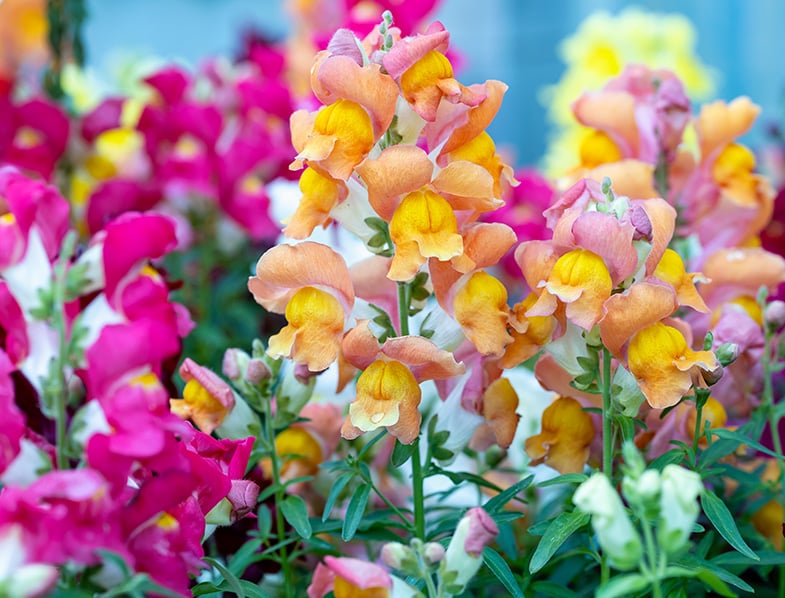
Snapdragons are multi-coloured flowers, and as you are reading how to grow Antirrhinum ‘Snapdragons, you will be happy knowing that they are even sold in mixed hybrid varieties of seed packs. You can find particular colours, too, for both seeds and seedlings. Some of the varieties which you can try are:
- Snapdragon’ Royal Bride’ – This variety bears pure white flowers with a soft aroma. This plant is perfect for growing as an excellent cut flower in a mixed border. These flowers are highly attractive to bumblebees.
- Snapdragon’ Night and Day‘ – This plant tends to have dark foliage and velvety crimson flowers. An extremely sharp, silvery-white throat is also seen.
- Snapdragon’ Twinny Peach’ – It comes under the dwarf variety. Delicately frilled petals and bright yellow and orange flowers are seen here. A robust and bushy plant perfect for growing in pots.
- Snapdragon’ Madame Butterfly’ – With long-lasting double blooms, this variety is an ideal example of colourful mixed hybrid flowers.
Common Pests, Problems and Plant Diseases Affecting Antirrhinum ‘Snapdragons’ Plant
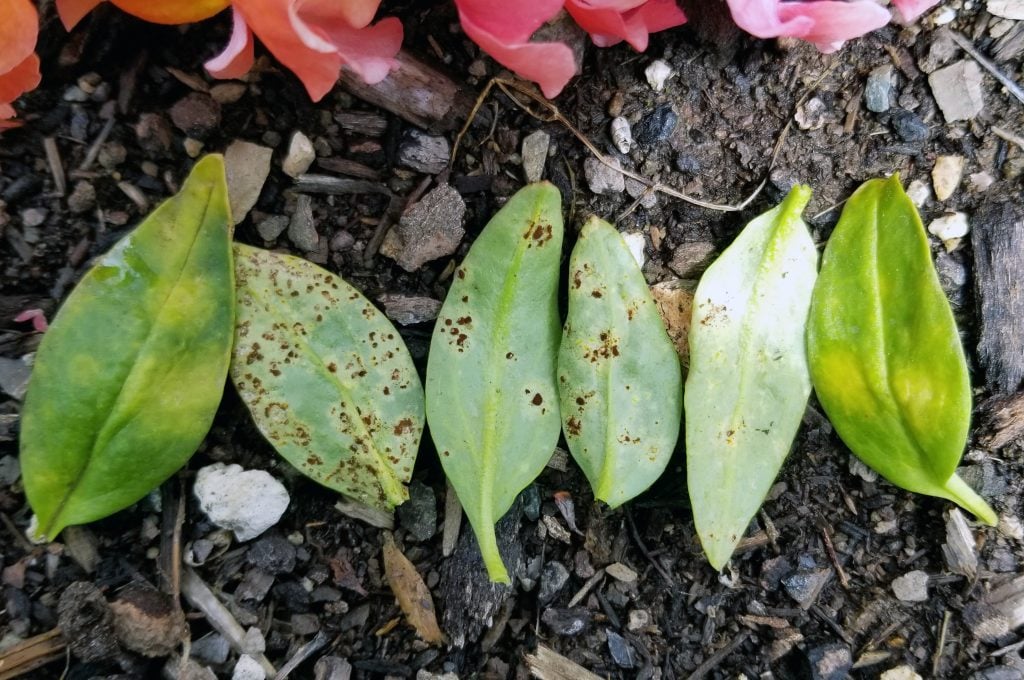
Pests and diseases are very common in plants. How to grow Antirrhinum ‘Snapdragons’ can also help you understand how to deal with these significant problems.
If you see rust fungus in the plants, it is advisable to grow them in a different place in the garden for the following year. This plant is also susceptible to fungal leaf spots, rusts, rotted roots, falling down, and wilting leaves. Aphids and spider mites are also very common. Using pesticides or horticultural oils in such cases can give your plant protection.
The demand for snapdragon flowers never goes away. This summertime bloom is great to have in your garden. They symbolise brightness, positivity, attraction, cheerfulness, and the beauty of your garden during the summer. As you are learning how to grow Antirrhinum ‘Snapdragons’, you must be aware of some common problems that might appear. However, they are easy to solve.
1. Leaf Wilting Tends to Slow Flowering
If the plant constantly gets too much heat and sunlight, you can see wilting in leaves. It is advisable to take them to a cooler and shadier spot away from direct sunlight. It helps the plant in less wilting and growing new blooms.
2. Leaves Get Yellowish-Brown Spots
Snapdragon rust is a very common problem where yellowish-brown spots appear on leaves. Over time, those spots get darker and larger. To treat this problem, you must check the plants and prevent them from coming. Try to prune the tree and make it thin so that air circulation occurs. Also, don’t water the plants during nighttime.
3. Plants Lose Balance and Fall
In the case of taller varieties of snapdragons, due to the heavy growth and height, plants often lose balance and fall. Top-heavy and fall over. The easiest solution to this is to give them support to stay straight.
How Do Snapdragons Behave in The Winter?
Though snapdragons are natively perennial, they develop as annuals. Snapdragons never seem to give an excellent bloom in the next year, just like the first year, even if they survive the first winter season. However, you can see seed pod formation in the first year; and if luck favours, they can even self-seed in the garden.
Summing It Up
Now, the easy-to-follow guidance on how to grow Antirrhinum ‘Snapdragons’ is fresh in your mind, and you have gathered enough information for your next planting; it’s high time to proceed. Don’t you want to be the coolest gardener by blooming these lovely and highly attractive snapdragons in your garden?
Be a smart gardener and start planning where you want to grow them in your garden. Do you want to start it indoors? Or from your yard? Or do you want to sow the seeds or seedlings in your garden border in a mix-and-match pattern? In the coming year, they will change the whole look of your garden.
So, are you ready to grow snapdragons? Follow the cultivation processes, and apply the tips for healthy growth. What’s more? Wait for their blooms and enjoy the magic of colours!
Frequently Asked Questions
Can Snapdragons Be Easily Cared For?
Yes, snapdragons are one of the easiest-growing plants! You can witness great growth with bright sunlight, temperature, moisture, and soil PH level balance. They can be planted and nurtured easily with ready-to-sow seeds or seedlings. Once you follow the process, you can witness a great bloom in the coming year.
Do Snapdragons Grow Faster?
Compared to other plants, Snapdragons are slow growers. These plants are highly resistant to cooler temperatures and can grow in sub-freezing temperatures. You can sow the seedlings indoors at least a few weeks before the last winter frosts; they can grow well in the spring and reach full size by mid-summer.
What Is the Lifespan of Snapdragons?
Though Snapdragons are perennials and short-lived, they behave like annuals. These plants have an approximate lifespan of about three years. You can not expect the same amount of flowering in a repeat bloom. Snapdragons can bloom throughout the seasons, but these plants perform best in spring, autumn, and even a milder summer.
Can Snapdragons Be Grown Indoors?
No, you cannot expect full growth from these plants if you grow them indoors. When sowing the plant’s seeds, you can grow them indoors and give them sufficient artificial light for germination. But, once the roots establish themselves, it is advisable to take them out and transplant them outside so that they can get natural sunlight. Both sunlight and partial shade are required for its full growth.

